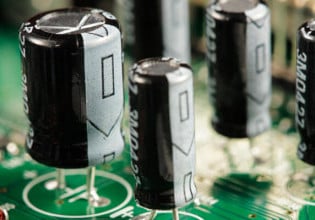Candidate NFC Standard Lets Single Antenna Handle Communications and Charging
The NFC Forum, the standards and advocacy association for Near Field Communication (NFC) technology, announced a Wireless Charging Candidate Technical Specification (WLC) that enables wireless charging of NFC-enabled devices with power transfer ratings of 250mW, 500mW, 750mW, and 1000mW.
The WLC standard enables a single antenna within the NFC-enabled device to manage both communications and charging. This combined solution makes it easier and more convenient to charge low-power IoT devices including fitness trackers, smartwatches, headsets, and other consumer devices. The NFC Forum published the WLC as a candidate specification, thereby letting the industry review the document before the forum validates the specification.
This NFC specification uses the 13.56 MHz base frequency and controls the power transfer with the help of the NFC communication link. NFC technology provides a constant carrier signal that allows the transfer of power to an NFC tag to enable communication. According to the NFC Forum, the WLC specification extends this communication functionality to enable wireless charging.
The specification says that the device operates in either static or negotiated modes, ensuring a safe charging process between two NFC-enabled devices. Static mode employs standard radio frequency (RF) field strength and gives a consistent power level. Negotiated mode uses a higher RF field supporting four power transfer classes of 250, 500, 750 and 1000 milliwatts.
"The NFC Forum's Wireless Charging Candidate Technical Specification allows for wireless charging of small battery-powered devices like those found in many IoT devices," said Paula Hunter, executive director, NFC Forum. "Our approach can help avoid the need for a separate wireless charging unit for small devices if the device includes an NFC communication interface. For example, a Bluetooth headset which includes NFC technology for pairing could also use the NFC interface for wireless charging. In this case, the NFC antenna is used to exchange the pairing information and to transfer power."
The NFC Forum says that its Candidate Technical Specifications are mature technical specifications whose final adoption is delayed to allow verification of its quality. The delay also allows progress to be made on related test specifications or the like. Candidate Technical Specifications have different licensing restrictions than adopted Technical Specifications.






